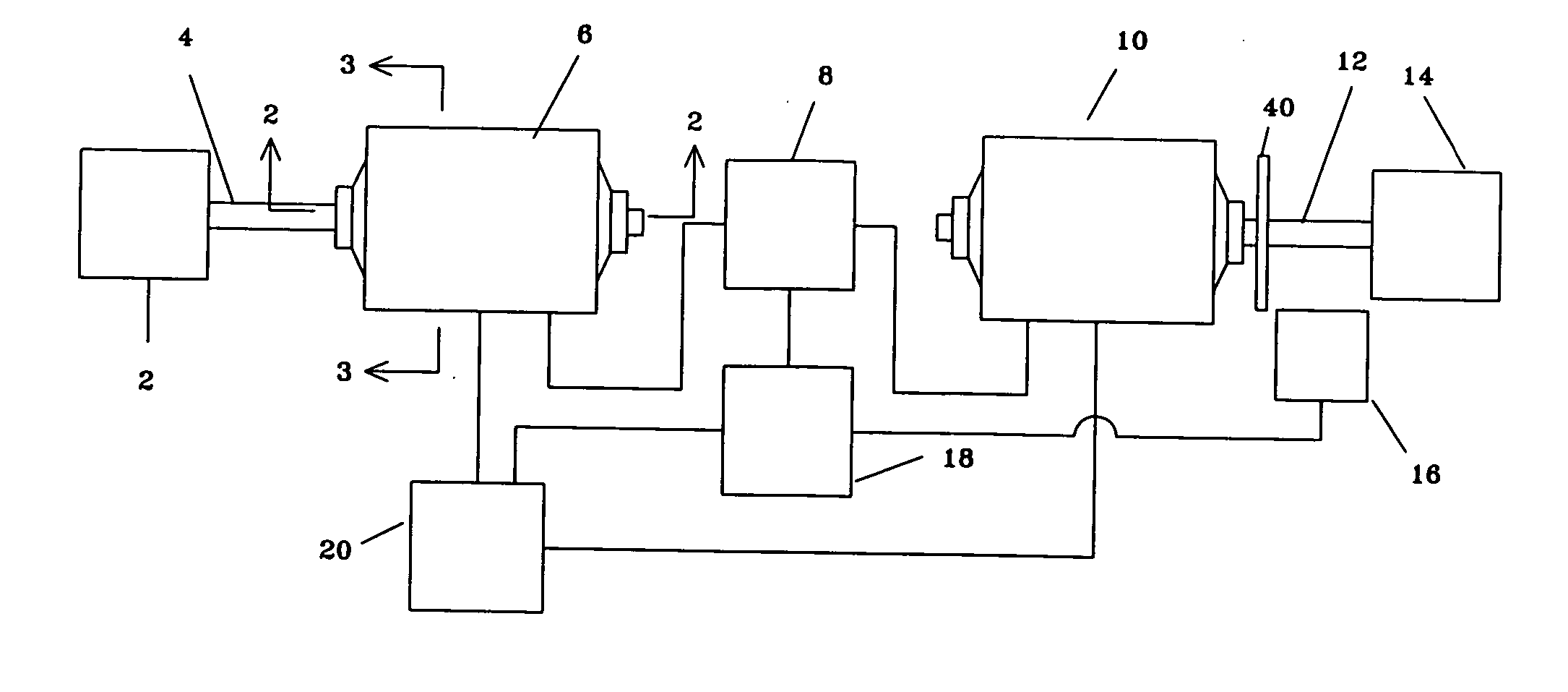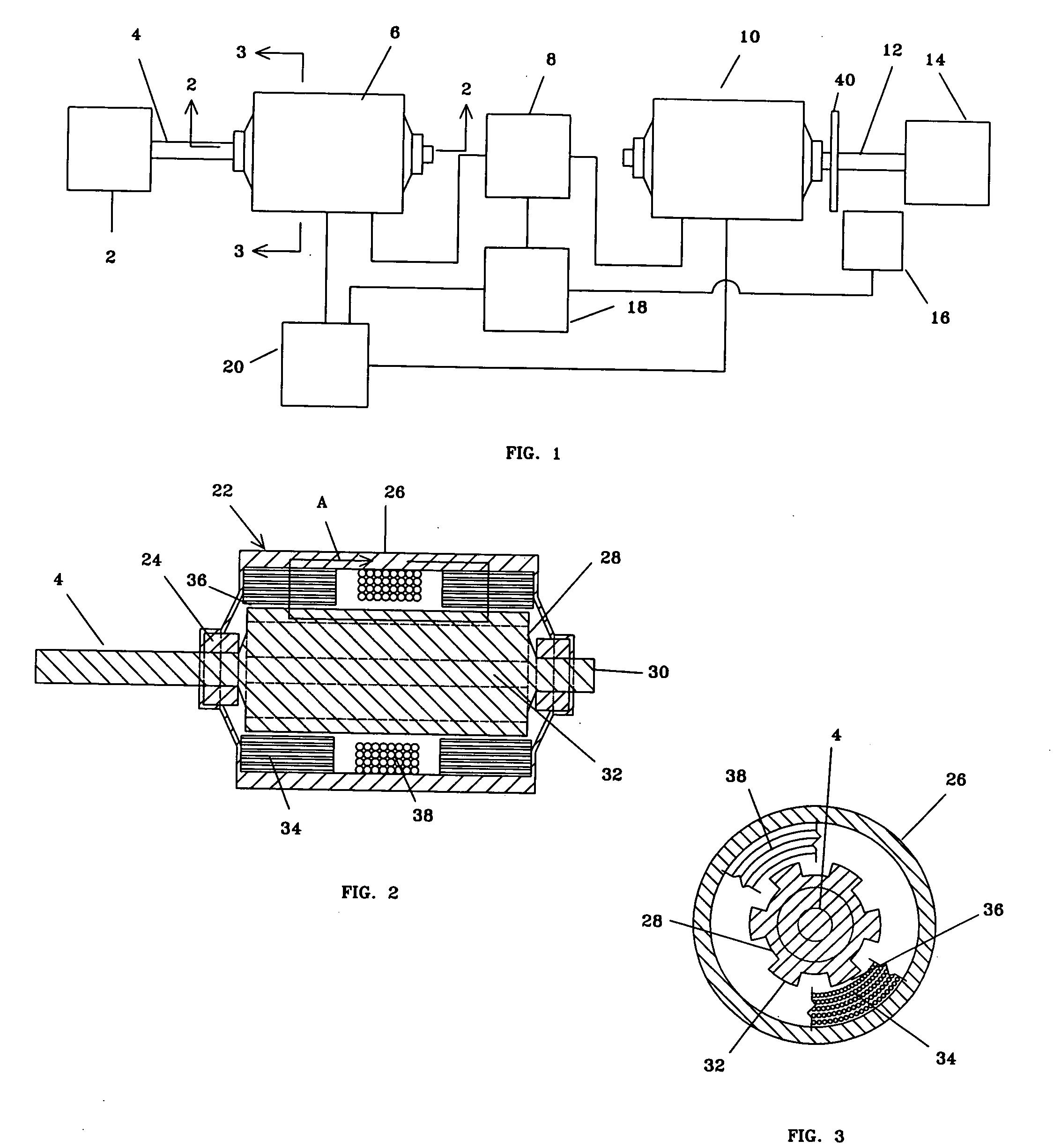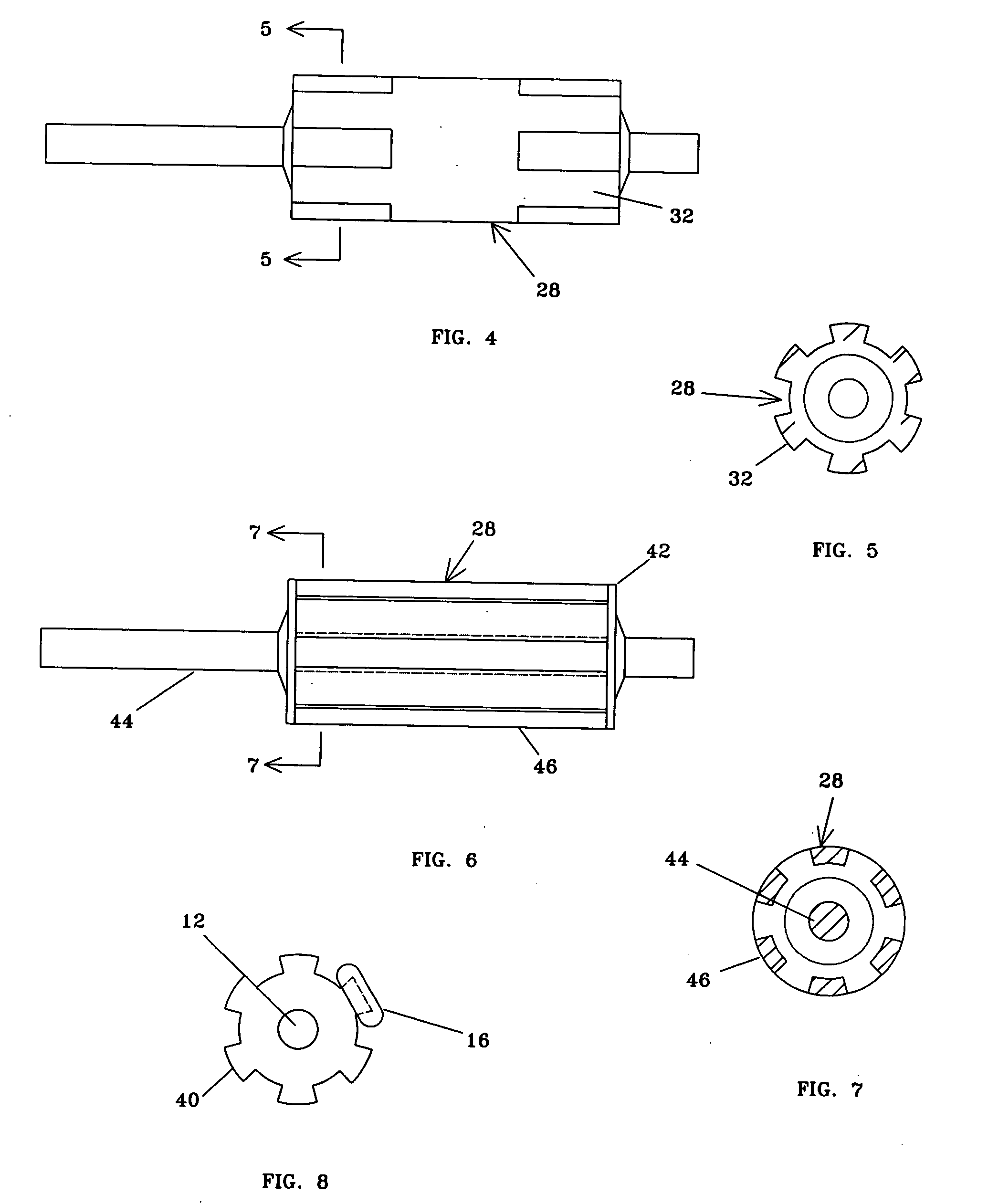Variable reluctance electric power system
a technology of electric power system and resistance, applied in the direction of dynamo-electric converter control, motor/generator/converter stopper, synchronous motor, etc., can solve the problems of high starting torque, difficult speed control, and low starting torque, and achieve low starting current, low cost, and high starting torque
- Summary
- Abstract
- Description
- Claims
- Application Information
AI Technical Summary
Benefits of technology
Problems solved by technology
Method used
Image
Examples
second embodiment
[0043] Referring now to FIG. 4, a side view of said rotor 28 is shown. As described above, said lobes 32 run the entire length of the body of said rotor 28. In the embodiment shown in FIG. 4, said lobes 32 do not run the length of said rotor 28, but occur only directly below said stators 34 (not shown in this Figure). It will be understood that shaping the poles of said rotor 28 may be used to provide an endless variety of wave shapes in the output of said stators 34.
[0044] Referring now to FIG. 5, a cross sectional view of the second embodiment of said rotor 28 taken along line 5-5 of FIG. 4 is shown. This Figure provides a better idea of the second configuration of said rotor 28. Said lobes 32 occur only at the ends of the body of said rotor 28. The center of said rotor 28 may be a solid cylinder or may be hollow.
third embodiment
[0045] Referring now to FIG. 6, a side view of said rotor 28 is shown which has the general configuration of a hollow squirrel cage. In this embodiment the body of said rotor 28 is not solid. A shaft 44 runs the length of said rotor 28 and a pair of end plates 42 are affixed to the shaft 44 at the position where the ends of the body of said rotor 28 would be in the previously described embodiments. Said lobes 32 (not present in this Figure) are replaced by a similarly configured series of bars 46 affixed between the two end plates 42. This embodiment would be useful and less expensive in lower speed machines. It may be necessary to include a central plate affixed to the center of said bars 46 to insure that said bars 46 do not bow outward.
[0046] Referring now to FIG. 7, a cross section view of the embodiment of said rotor 28 shown in FIG. 6 shown taken along line 7-7 of FIG. 6. This Figure better shows the configuration of said bars 46 and that the portion of said rotor 28 between s...
first embodiment
[0047] It should be understood that the embodiments of said rotor 28 shown in FIG. 4, 5, 6, and 7; work in exactly the same manner as described above for said rotor 28 and may be used in either the alternator configuration or the motor configuration of the instant invention.
[0048] In operation, said prime mover 2 (which might be, for example, a turbine) turns said alternator shaft 4. The greatest benefits of the variable reluctance electric power system of the instant invention are realized if the operating speed of said prime mover 2 is significantly greater than the operating speed of said operating unit 14. For example, said prime mover 2 might be a turbine operating at 50,000 rpm and said operating unit 14 might be the drive wheel of a vehicle. In this example, the drive wheel would most likely operate at from zero rpm to less than 1,000 rpm. With a conventional system, the 50,000 rpm of the turbine would have to be mechanically reduced to the 0-1,000 rpm operating speed of the ...
PUM
 Login to View More
Login to View More Abstract
Description
Claims
Application Information
 Login to View More
Login to View More - R&D
- Intellectual Property
- Life Sciences
- Materials
- Tech Scout
- Unparalleled Data Quality
- Higher Quality Content
- 60% Fewer Hallucinations
Browse by: Latest US Patents, China's latest patents, Technical Efficacy Thesaurus, Application Domain, Technology Topic, Popular Technical Reports.
© 2025 PatSnap. All rights reserved.Legal|Privacy policy|Modern Slavery Act Transparency Statement|Sitemap|About US| Contact US: help@patsnap.com



